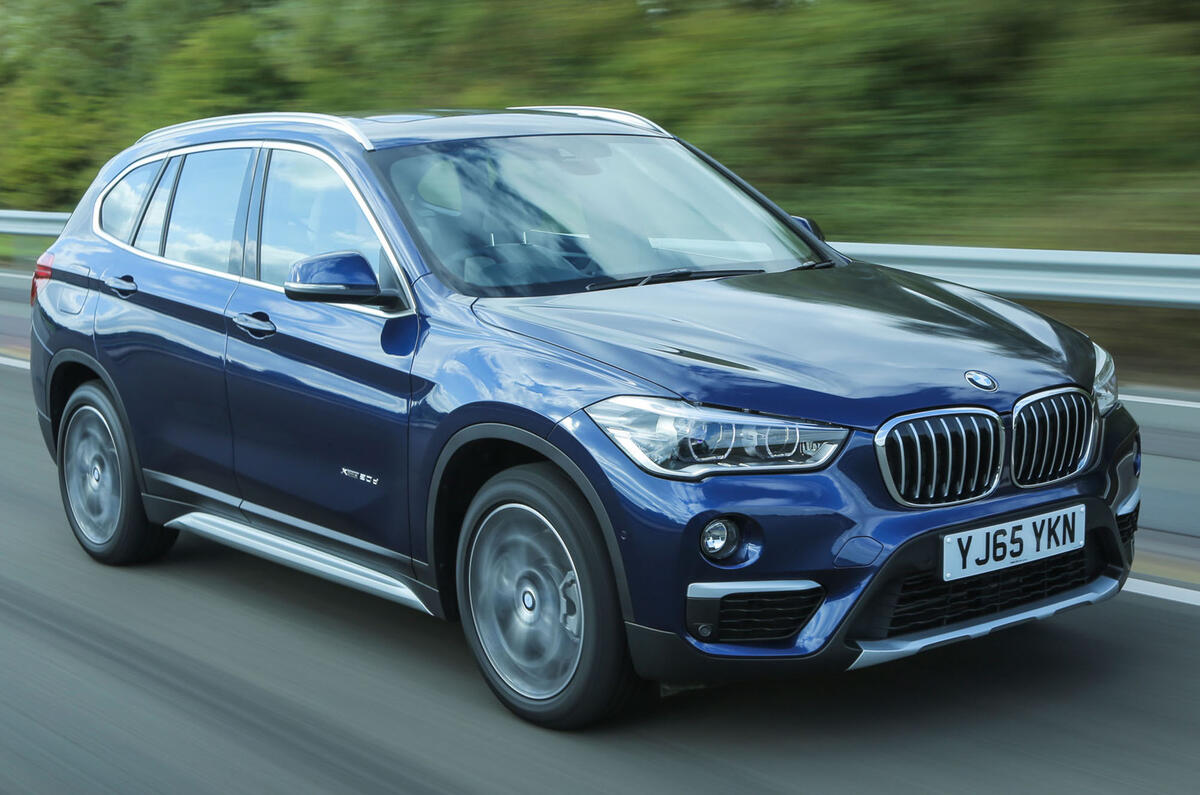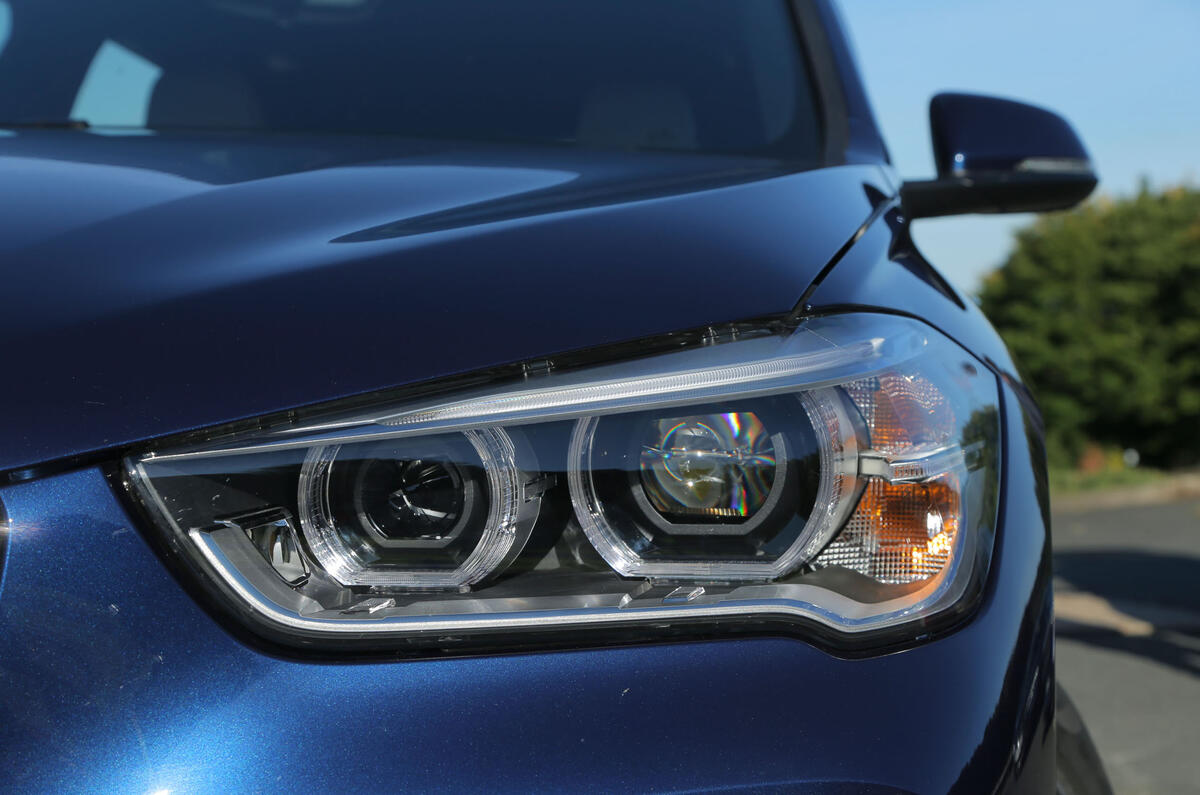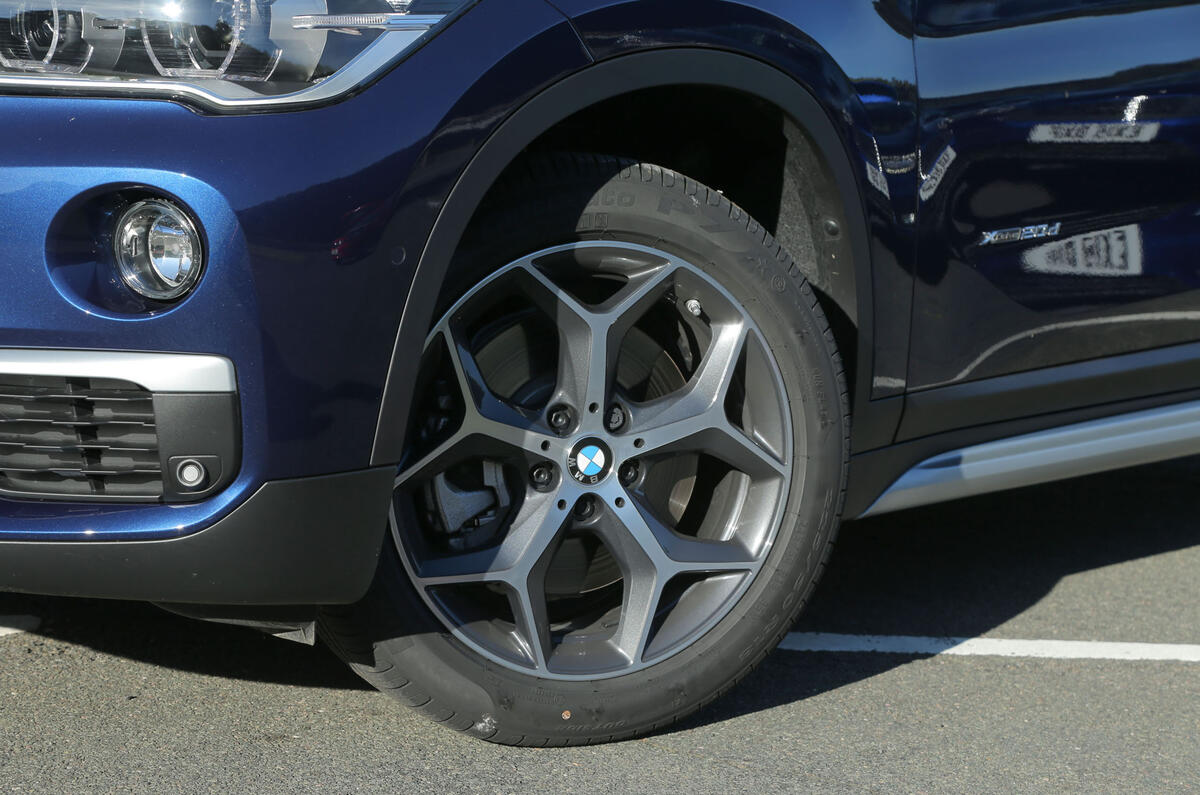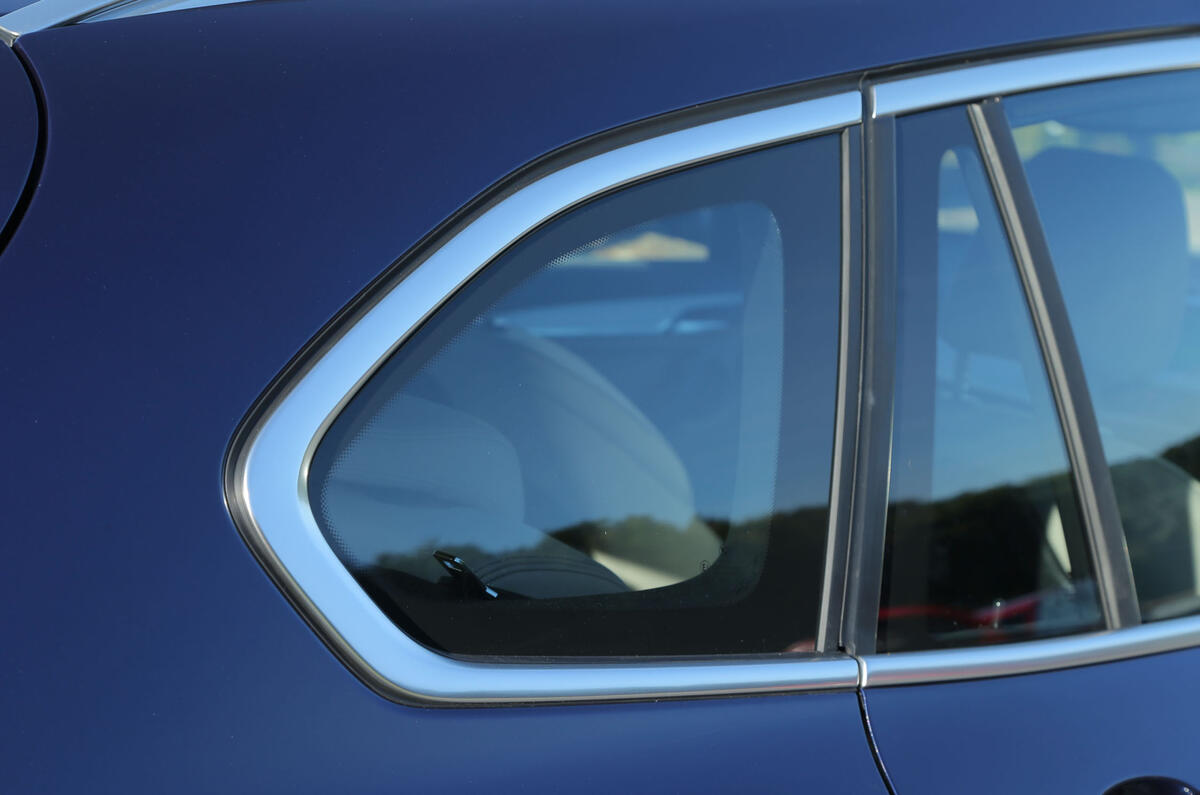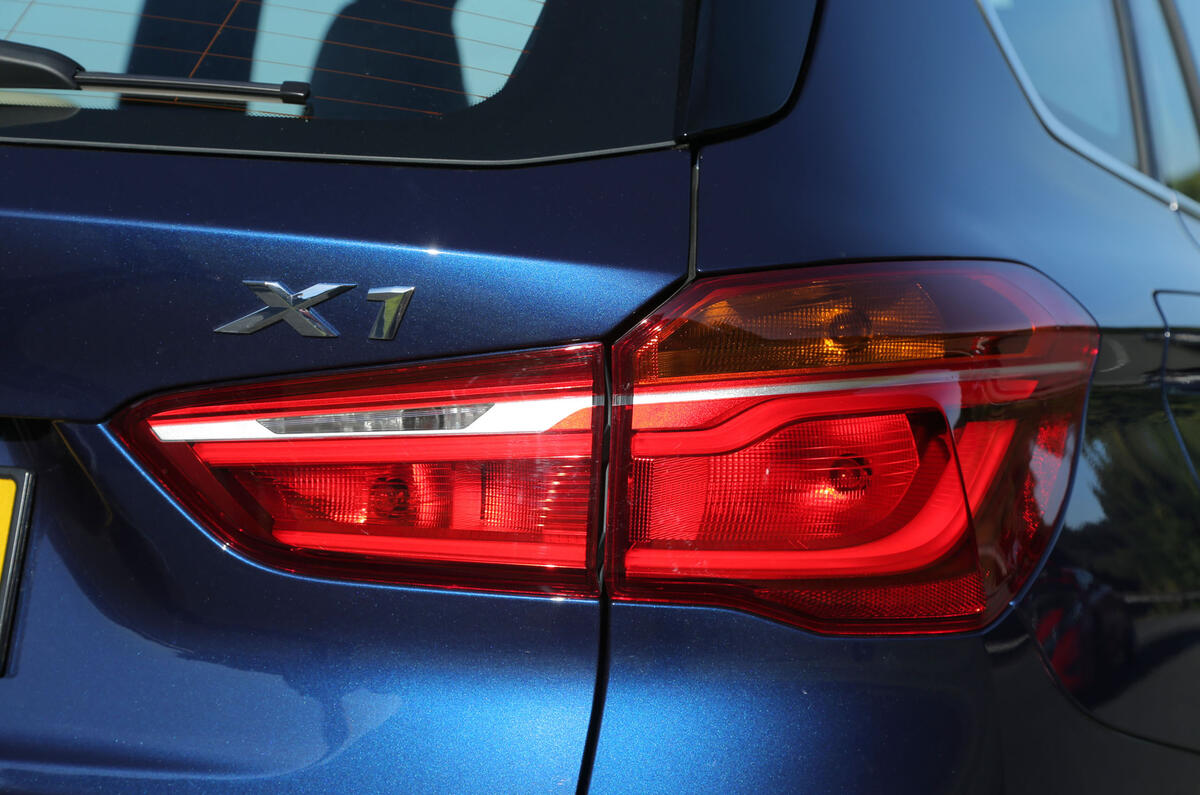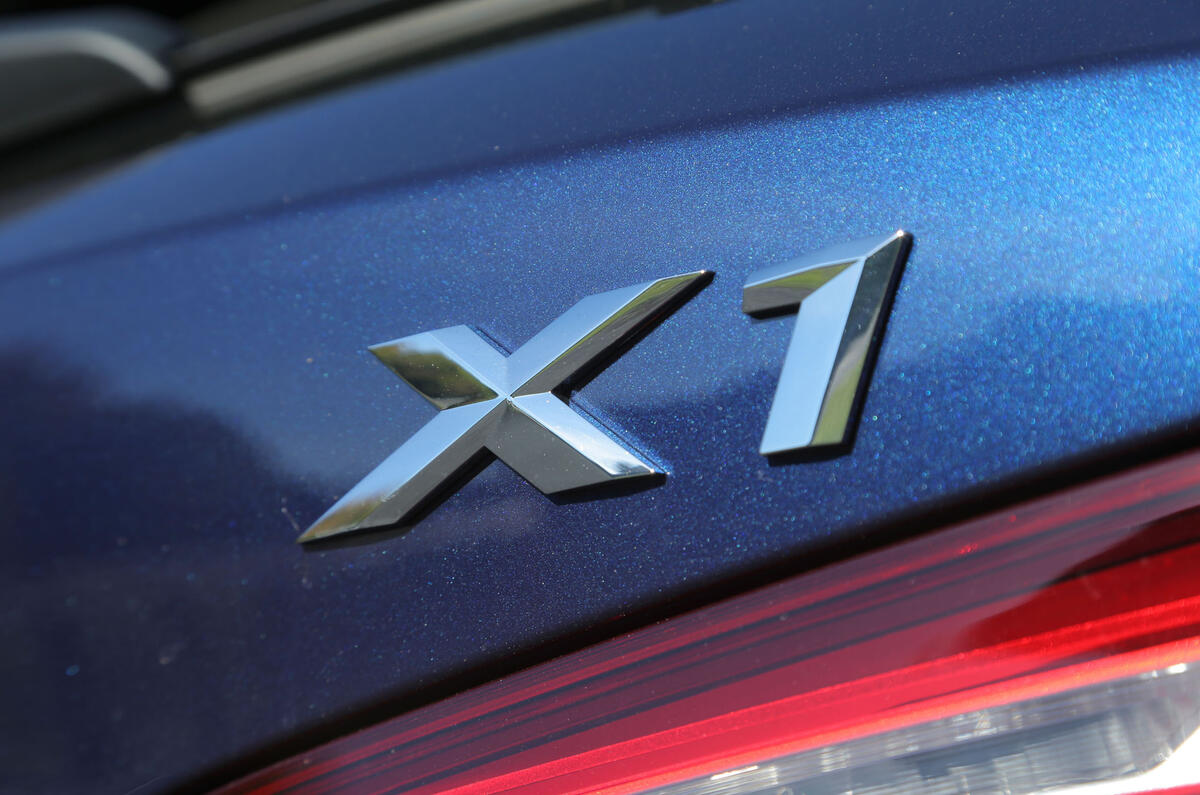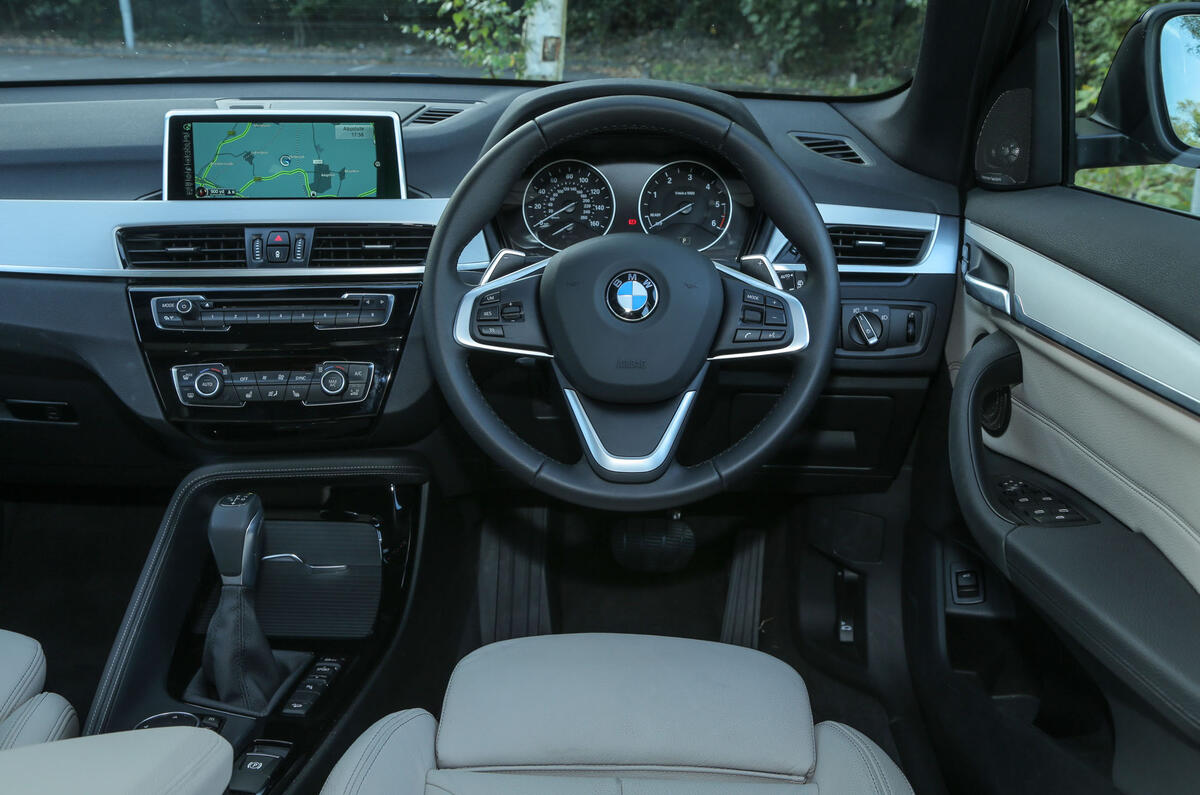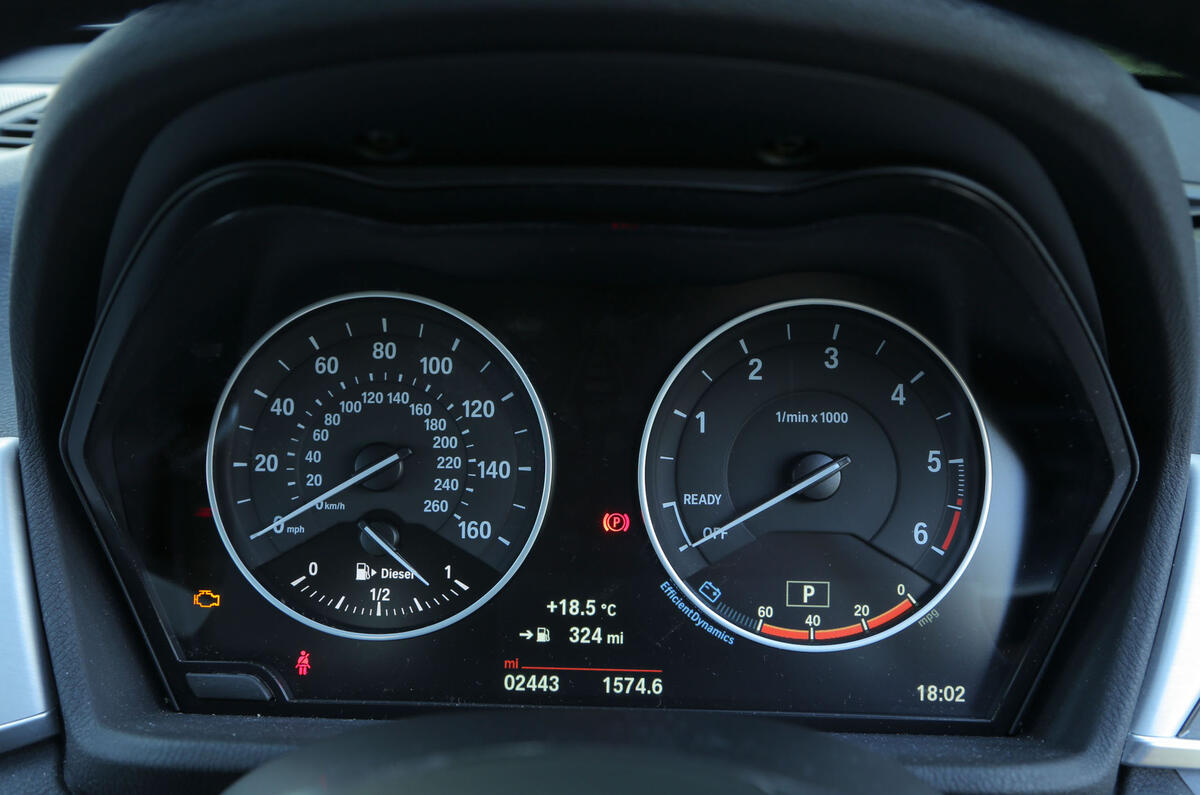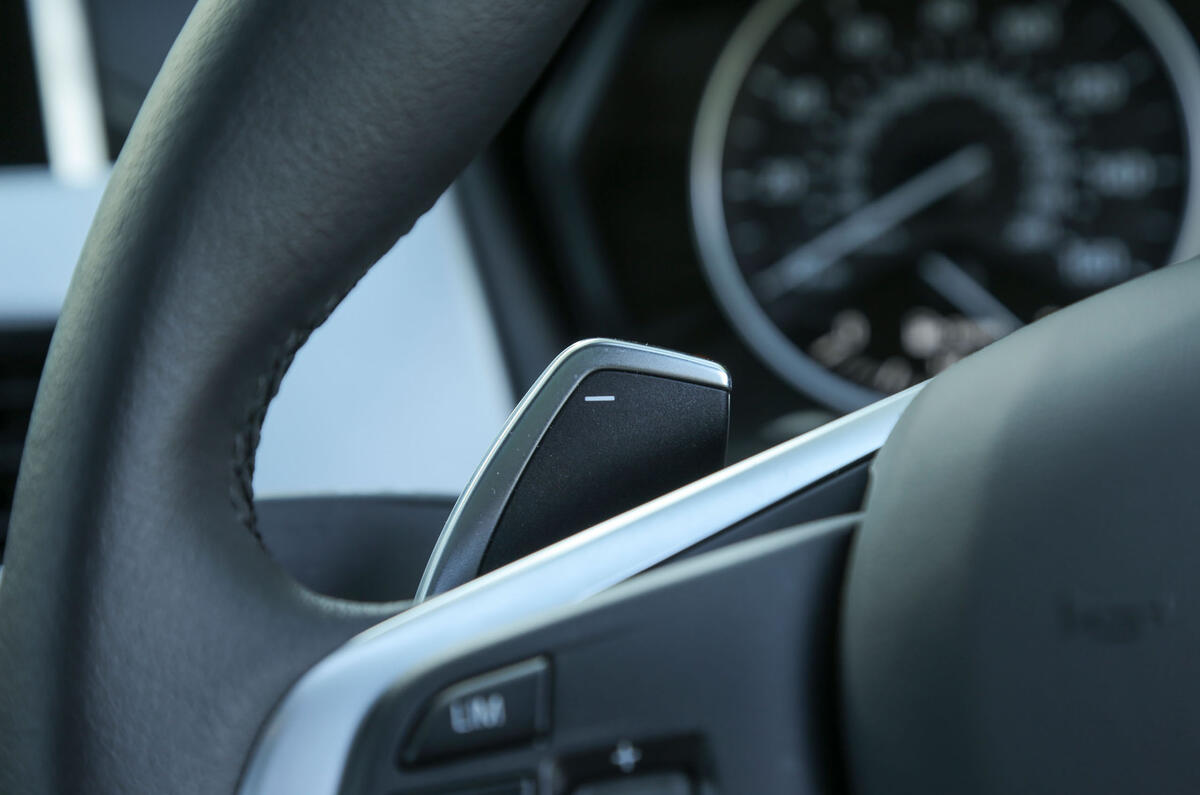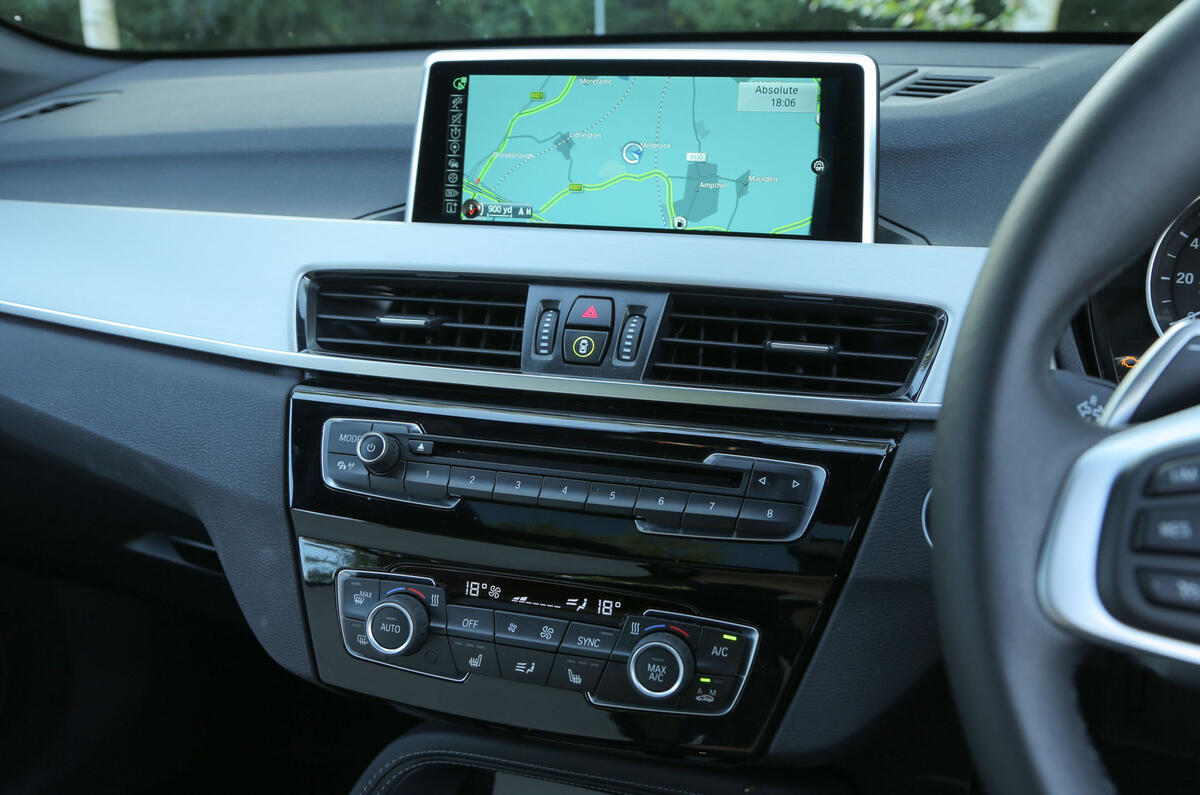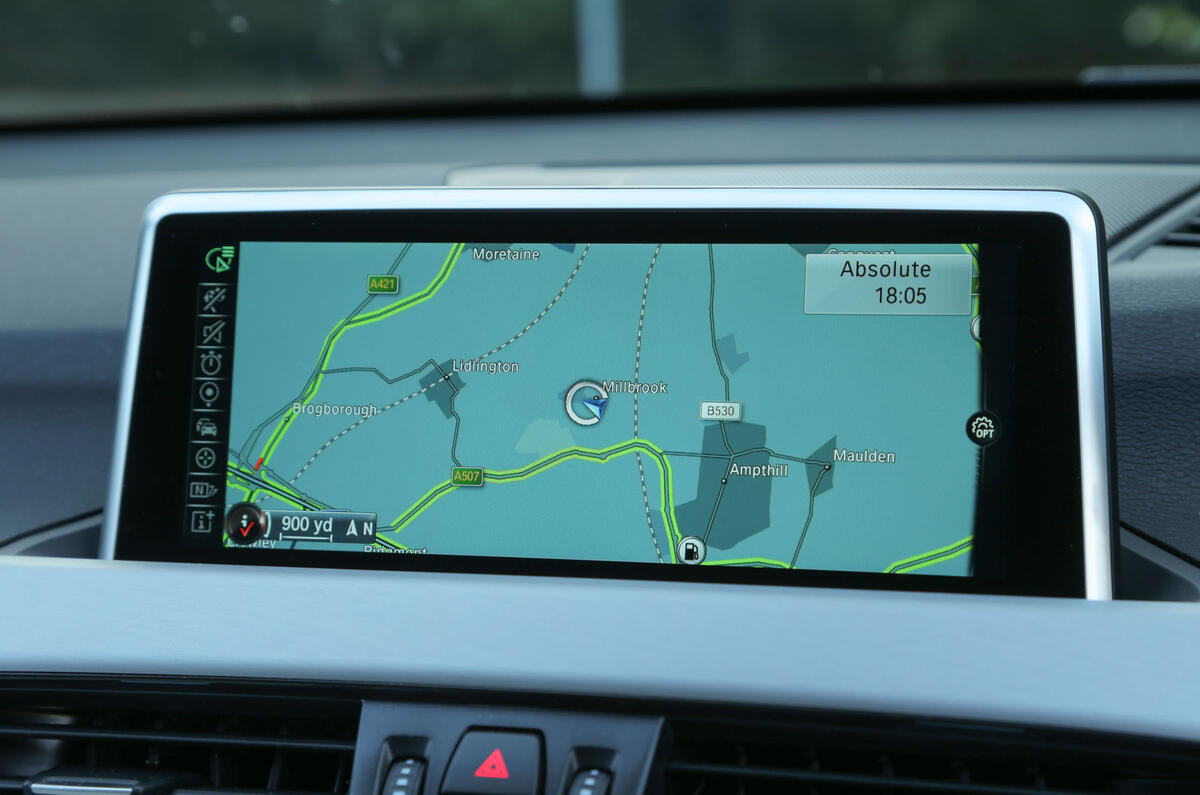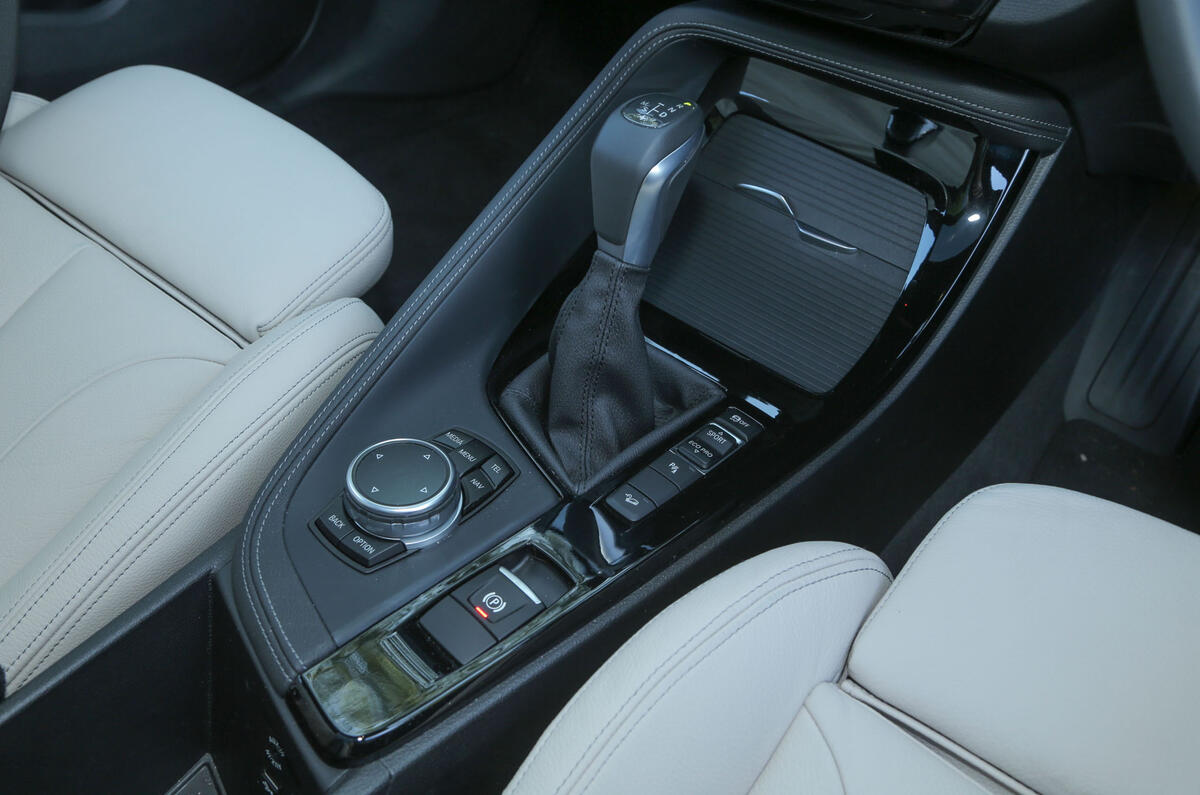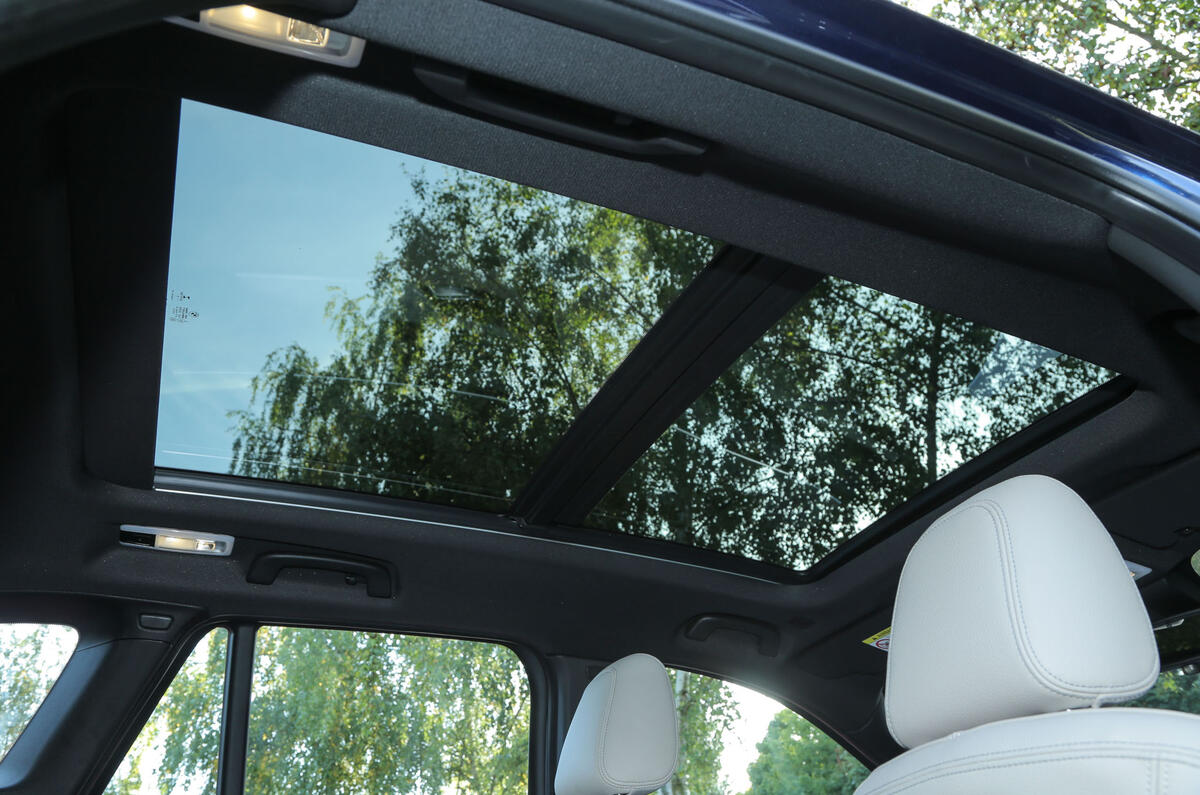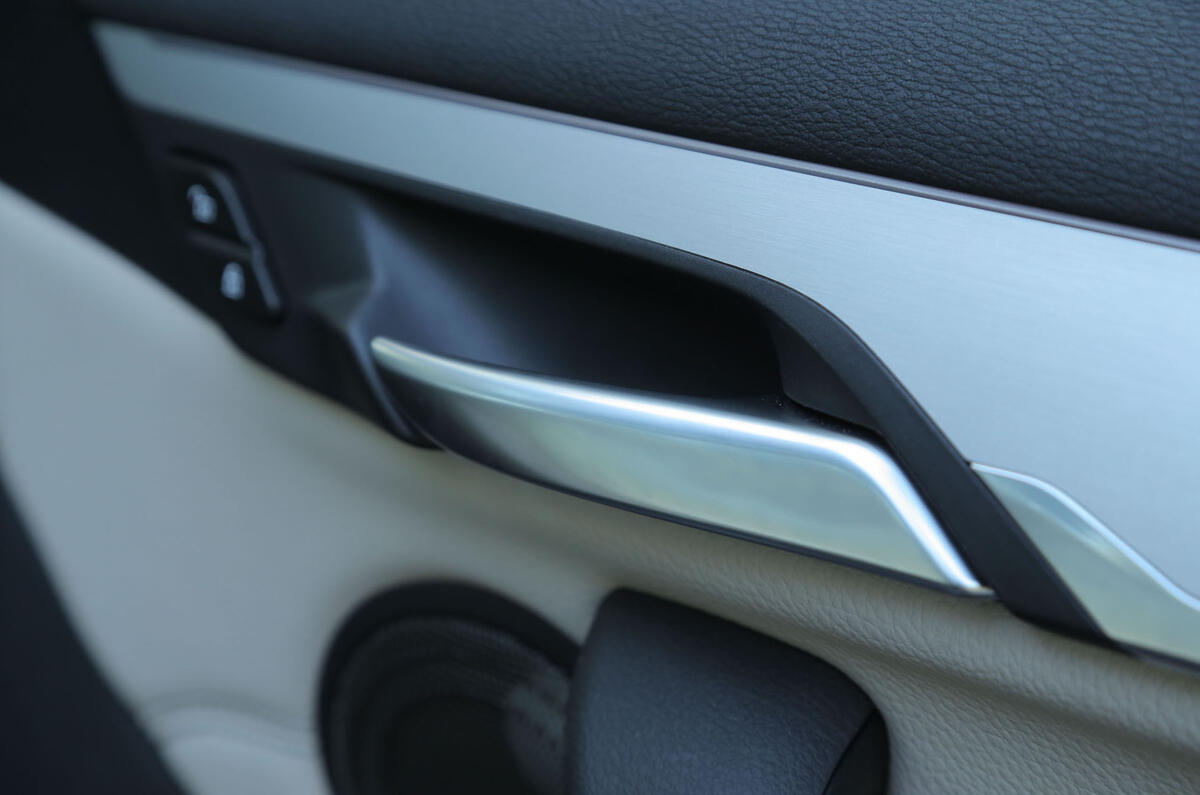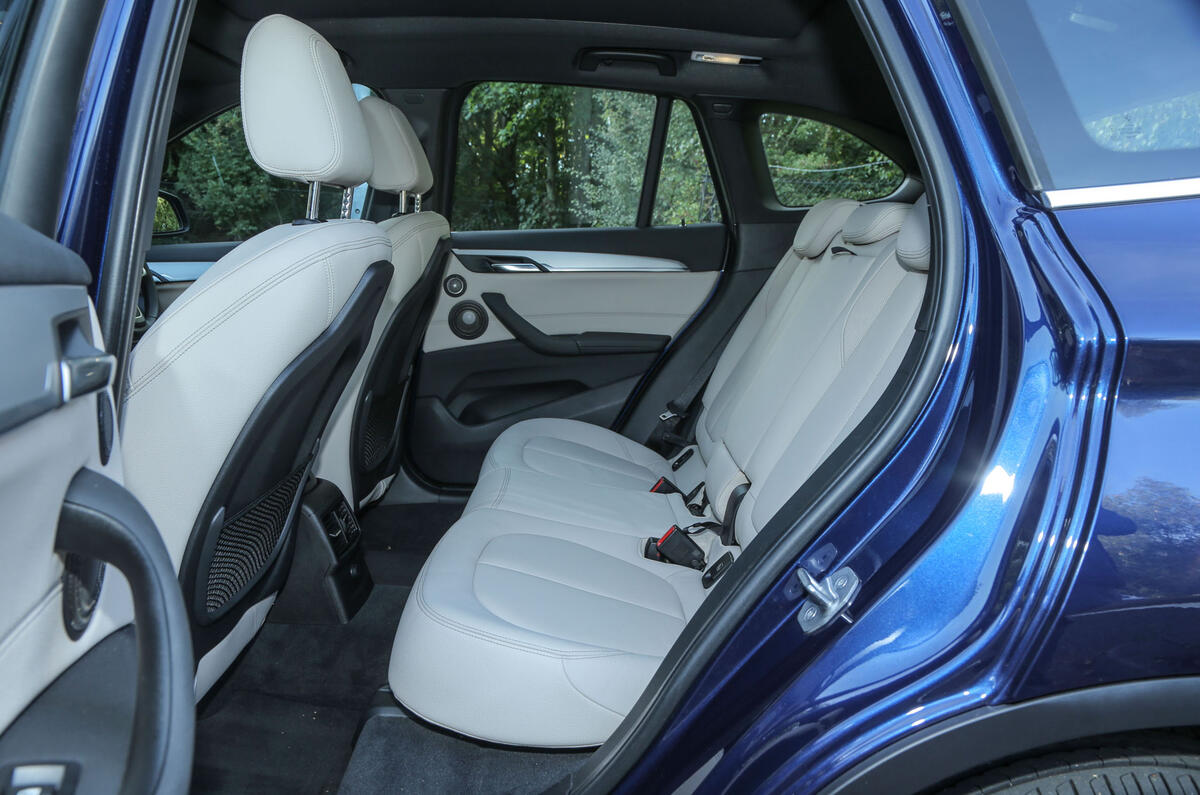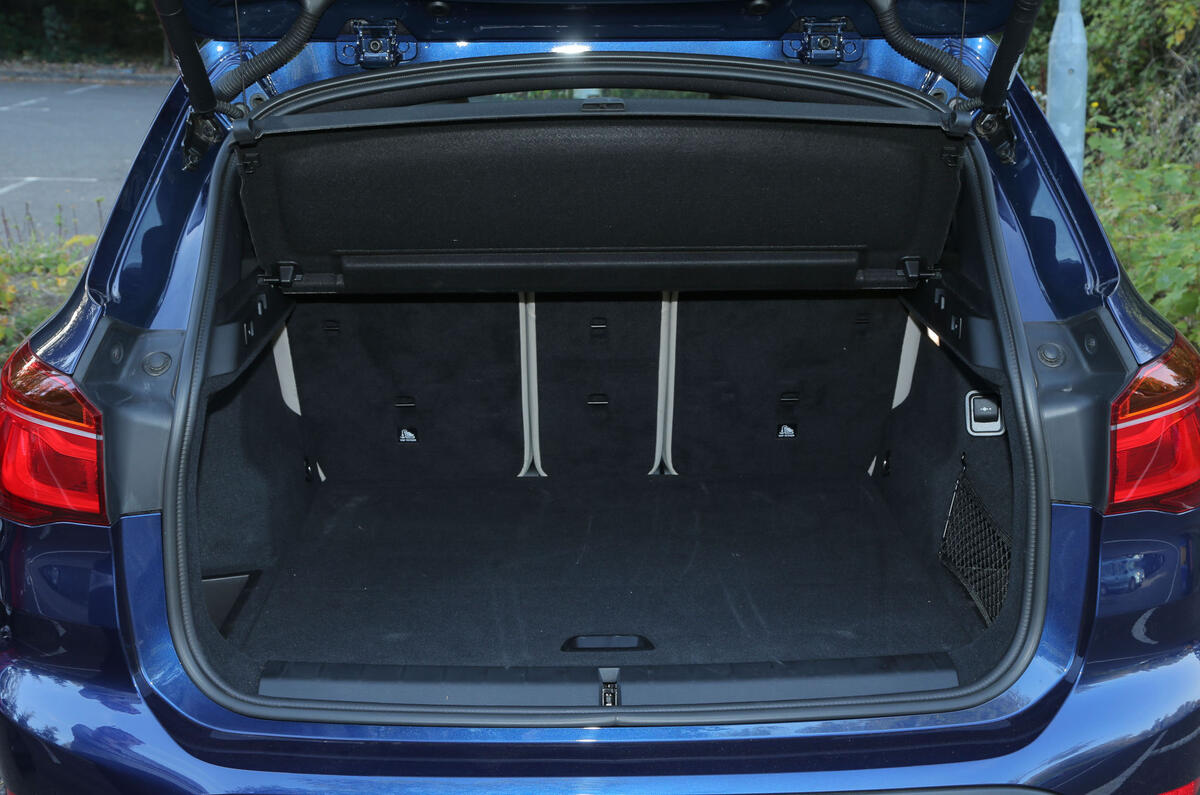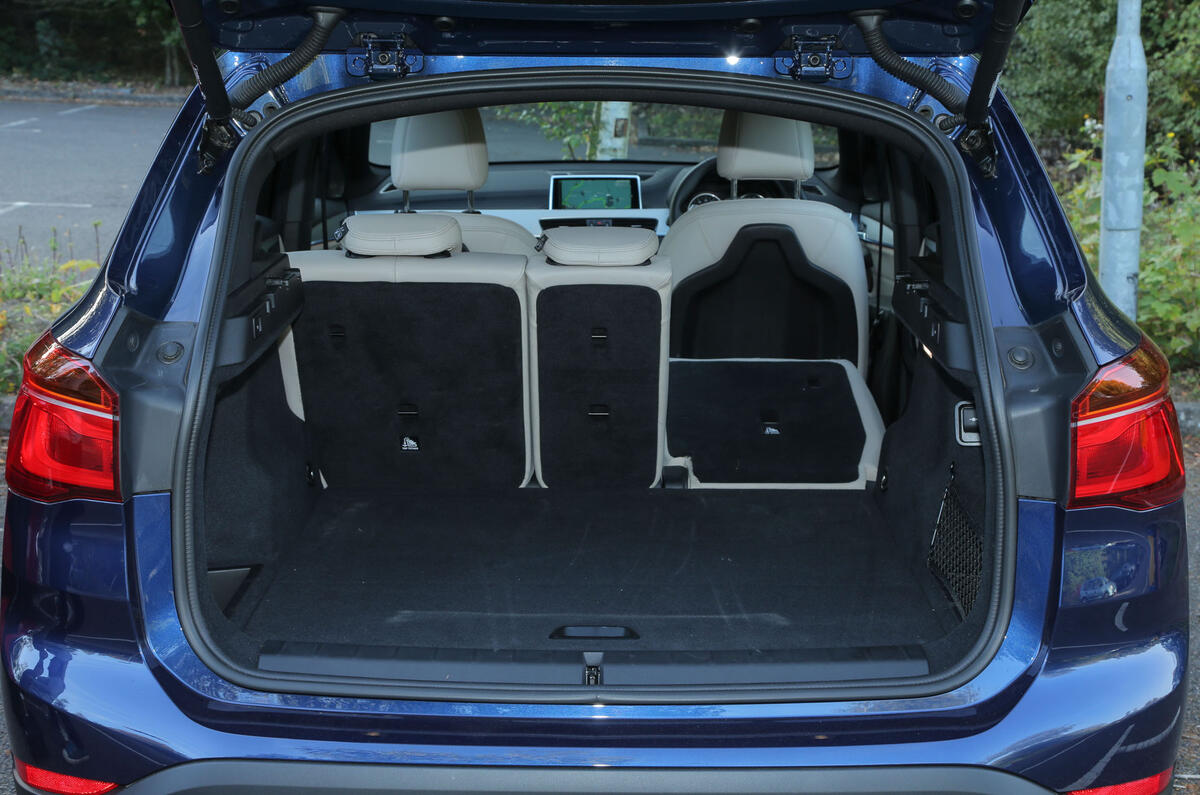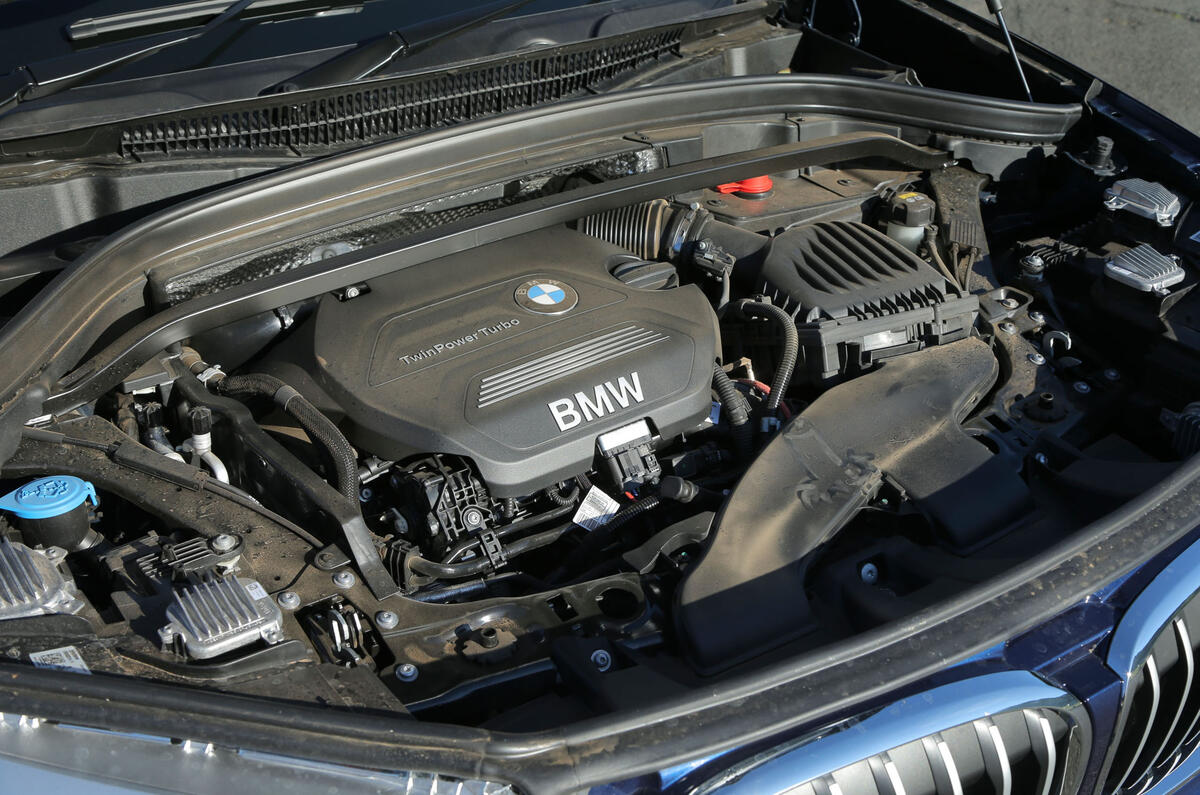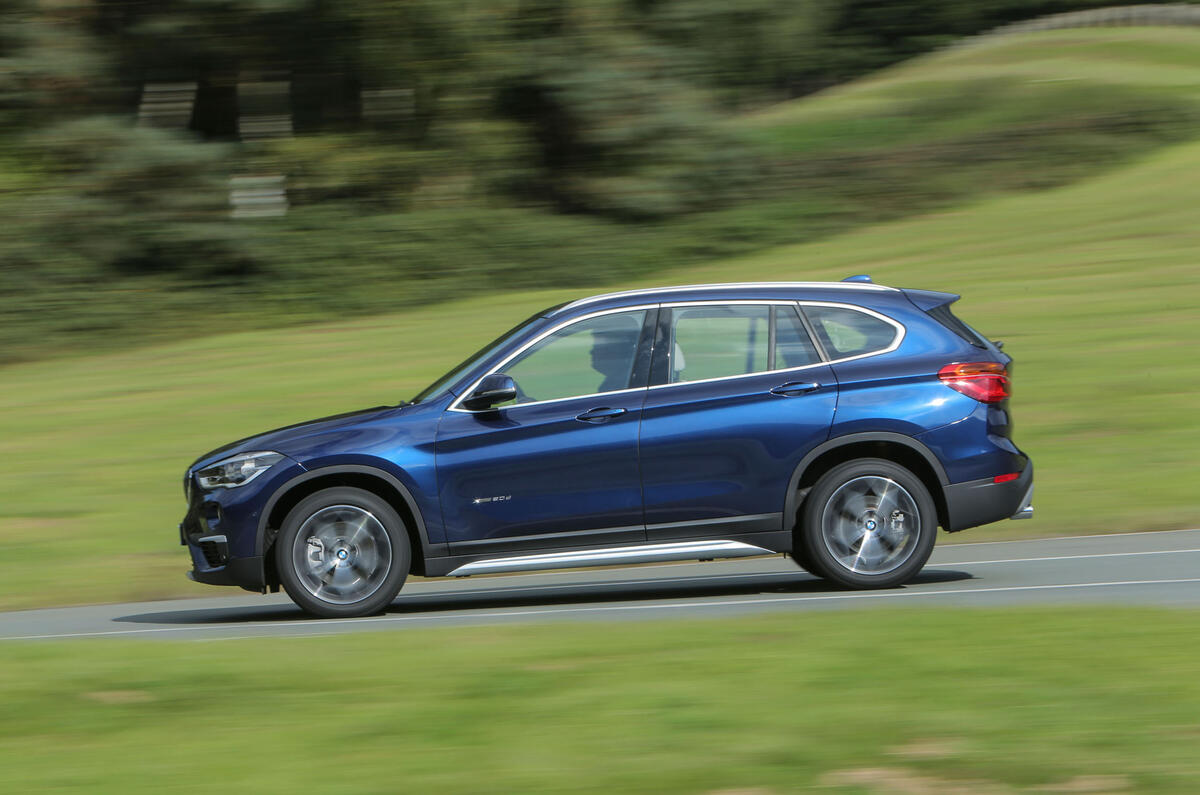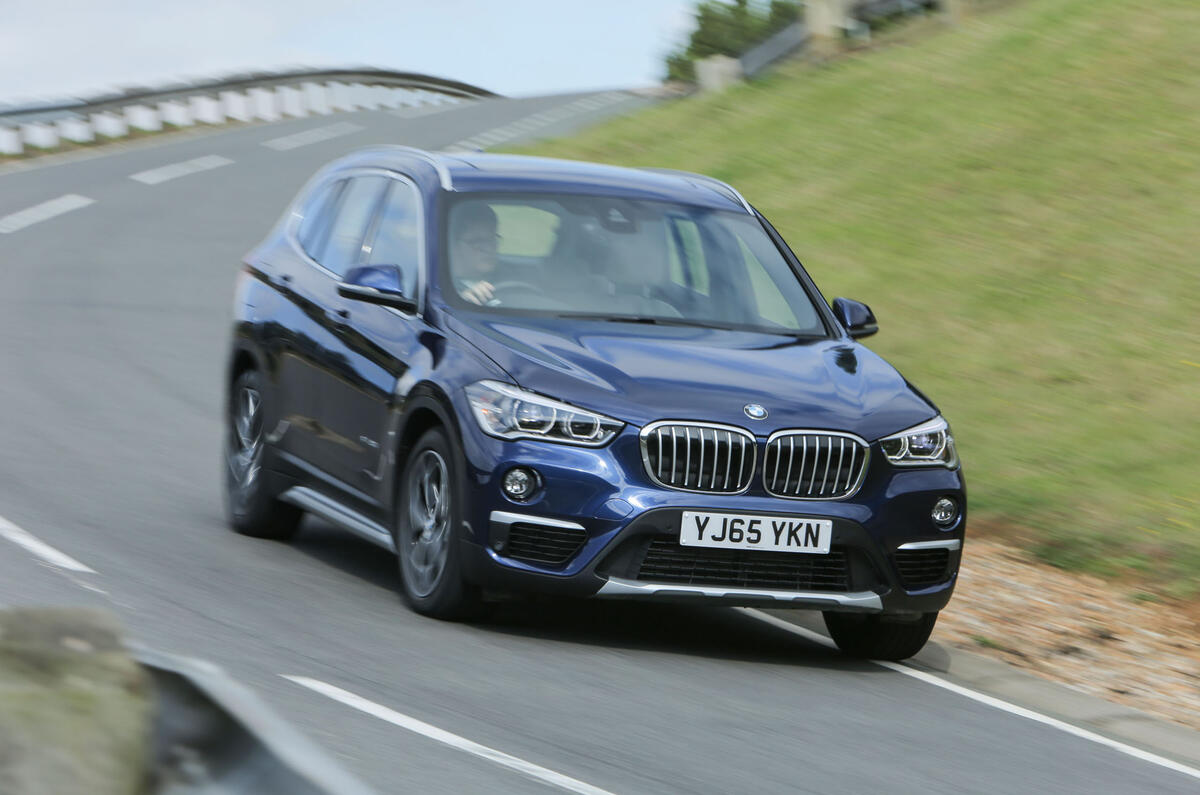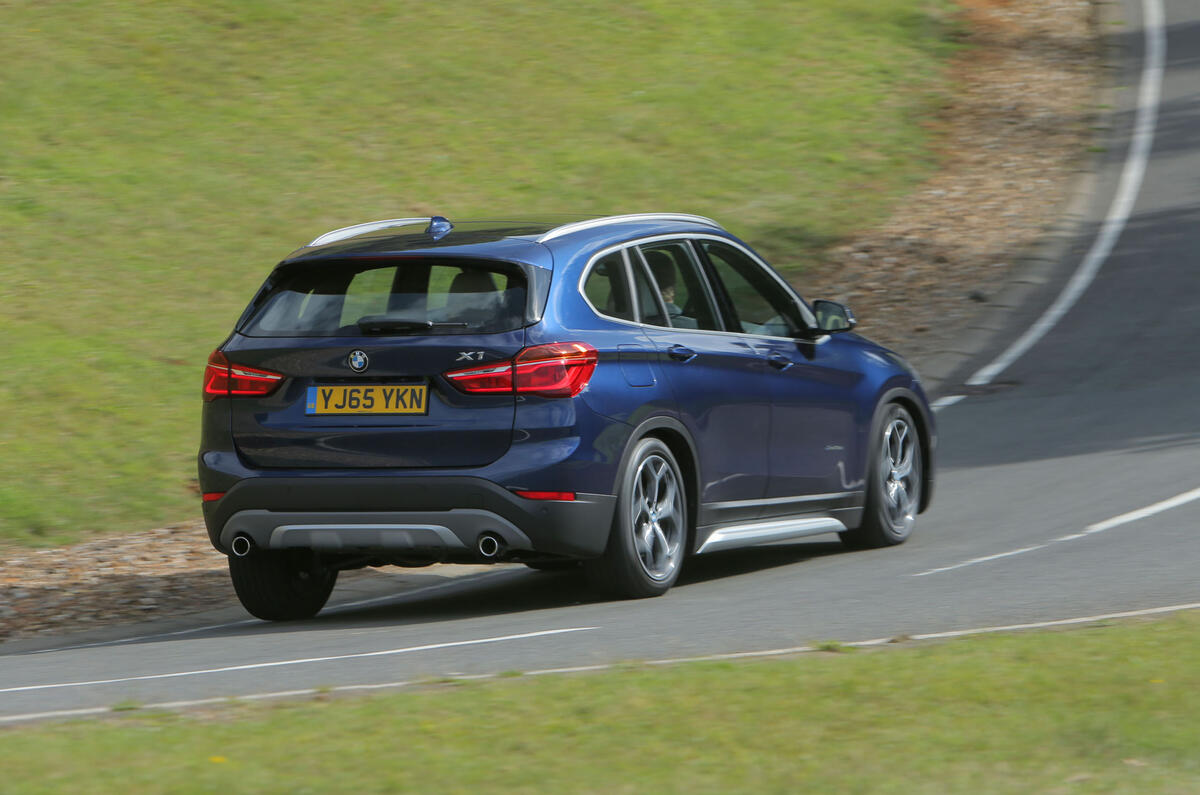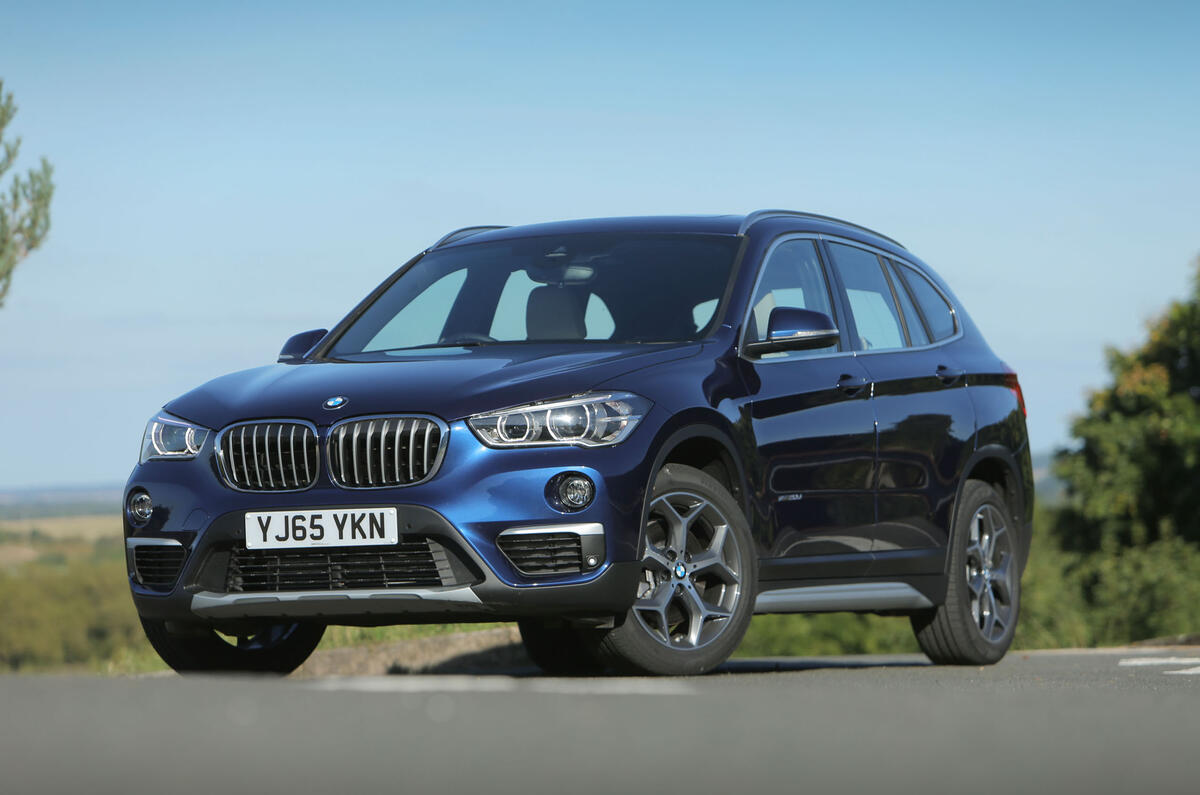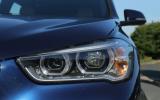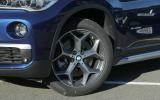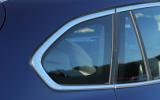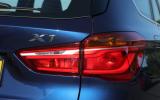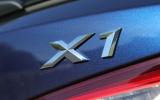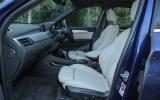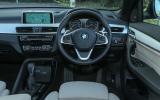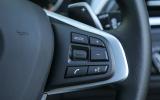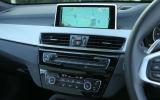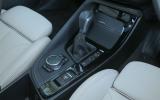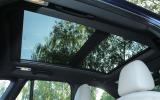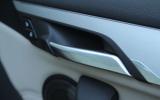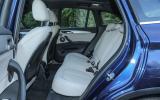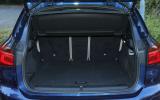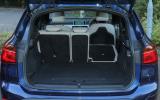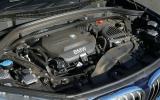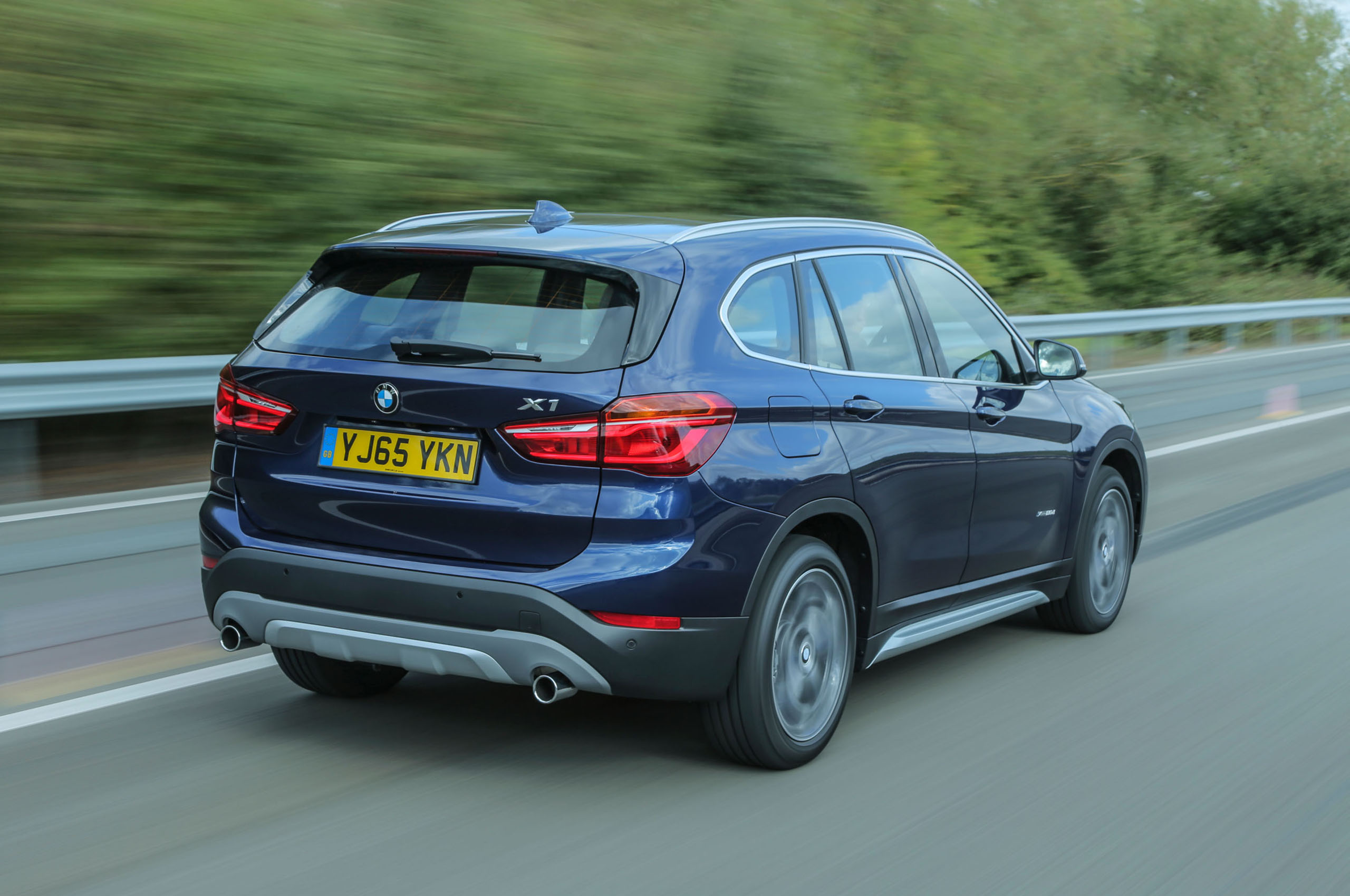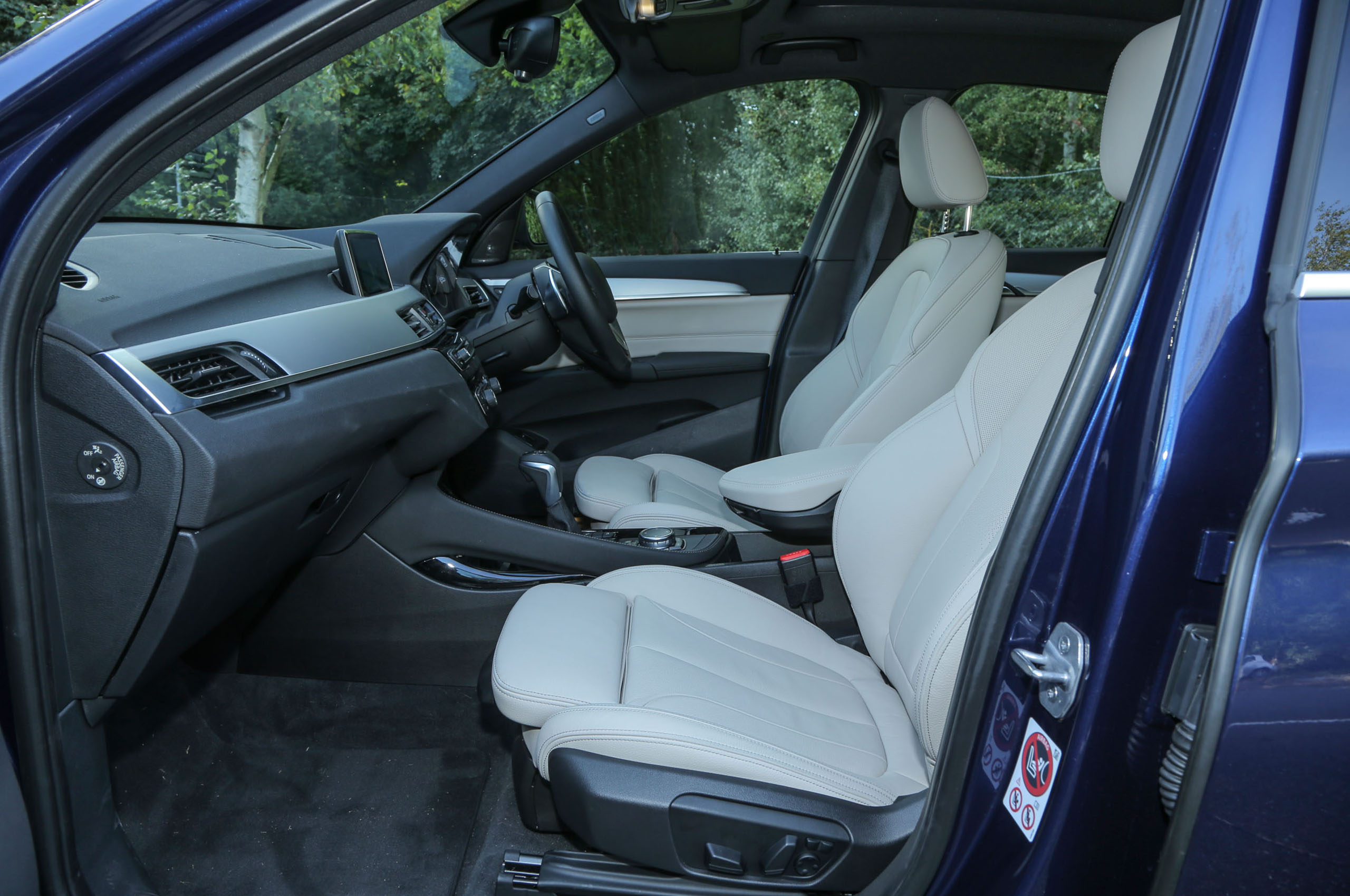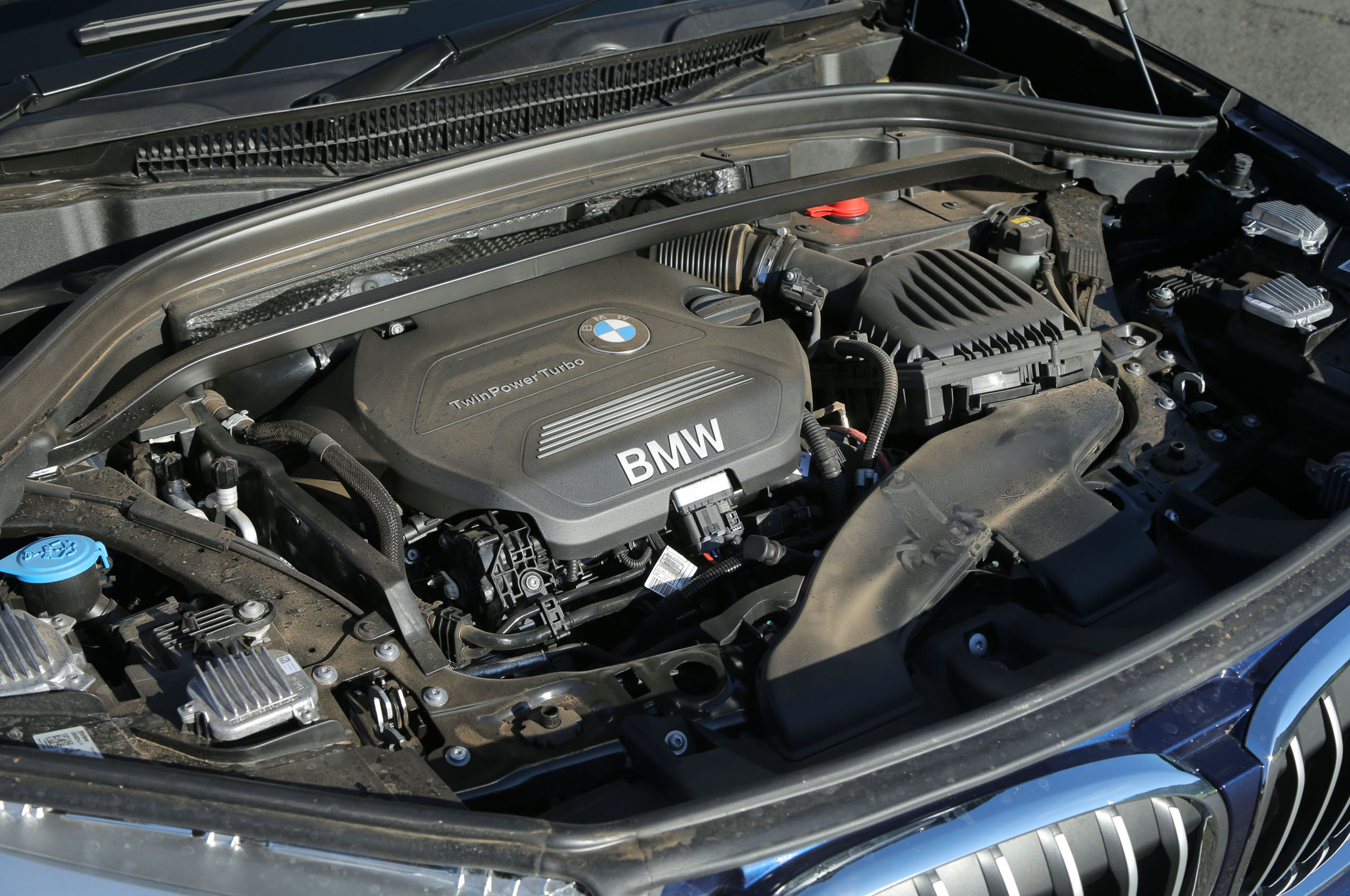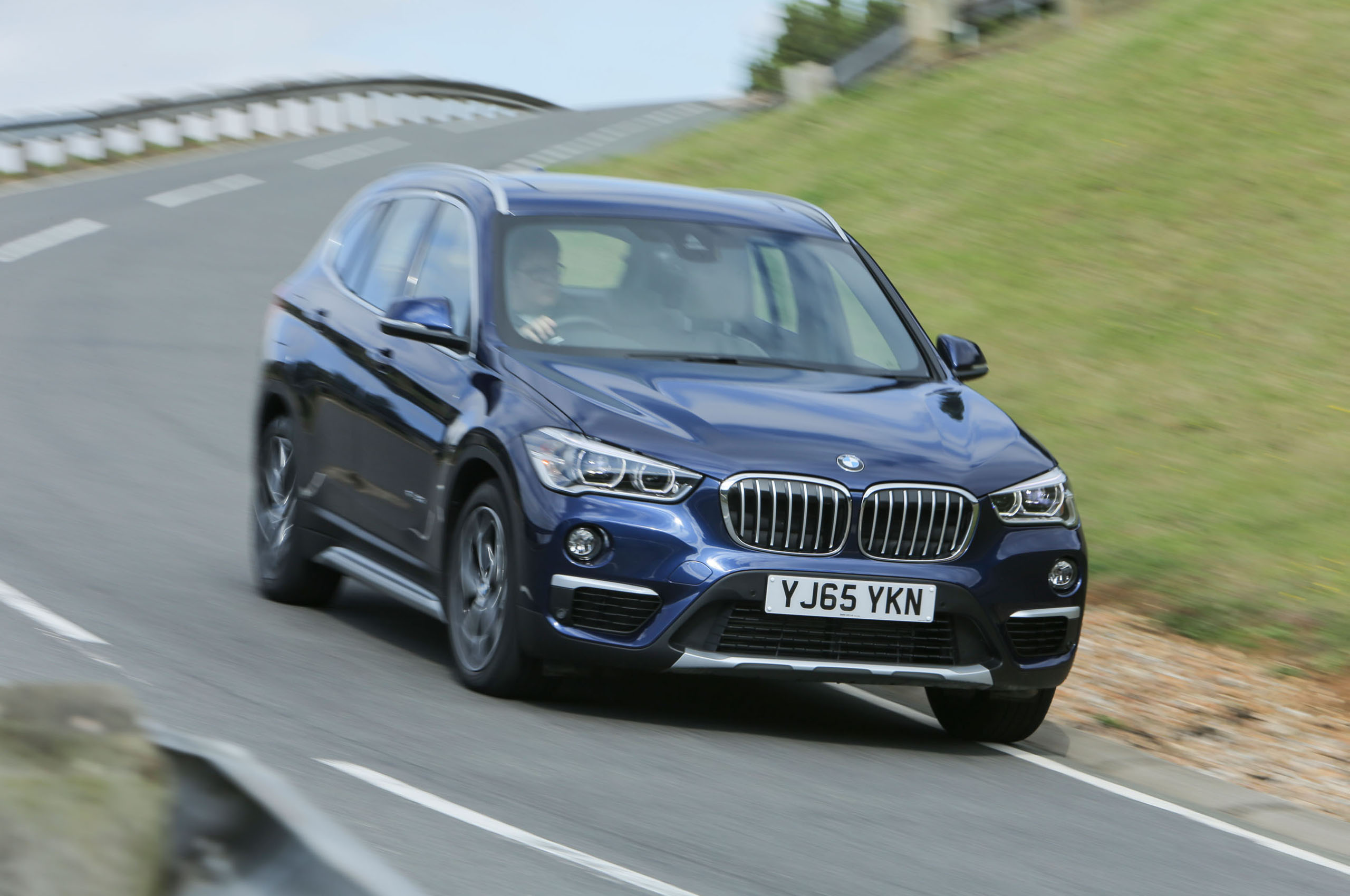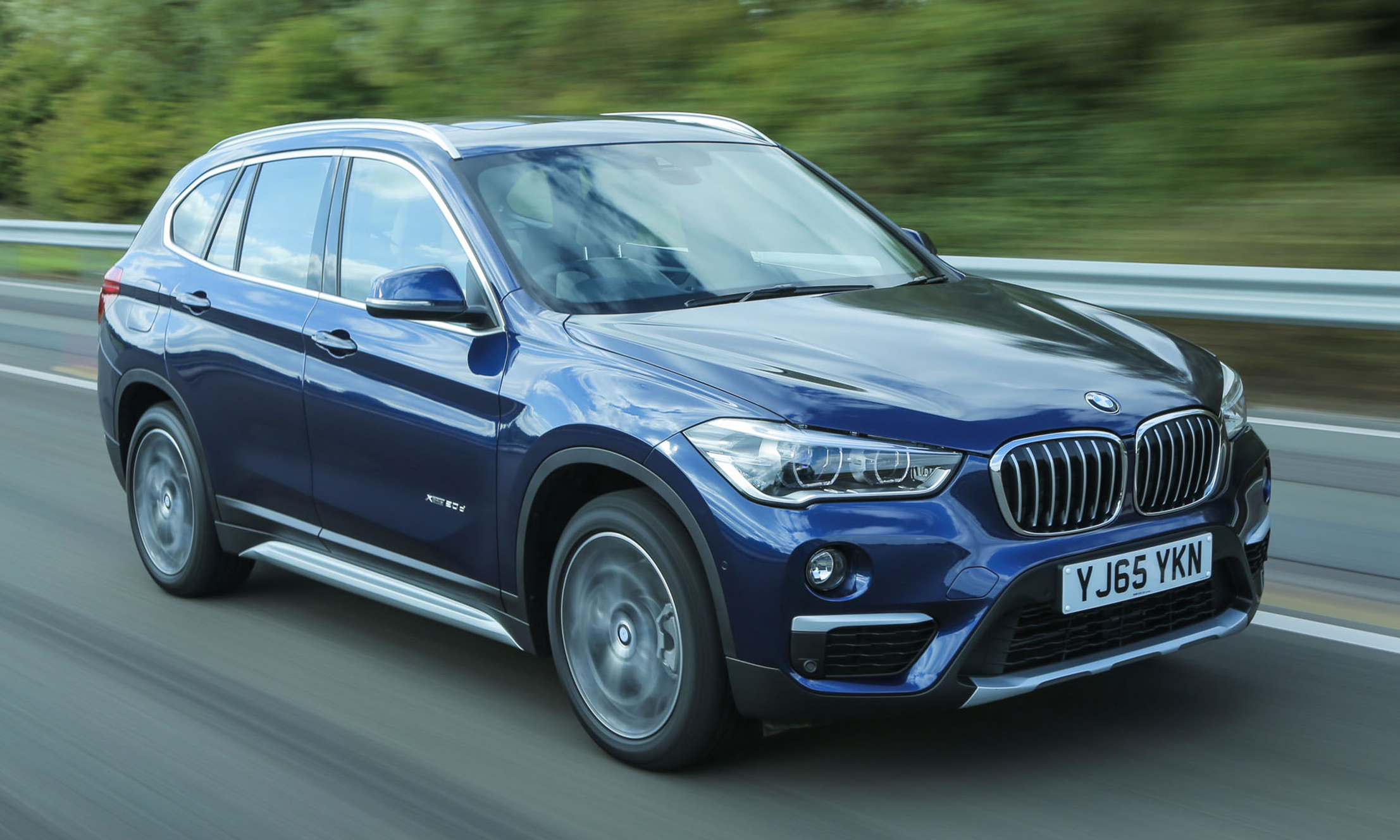BMW’s reward for turning the X1’s engine through 90deg was readily apparent inside the mk2 car. The mechanical change was part of a process that had transformed the X1 from being one of the least practical crossovers of its size into one of the most.
Although you sit 30mm higher in the front than in the old car, and higher still in the rear, there was an abundant amount of head room and generous leg room in the front row.
Further back, our test car’s optional sliding rear seats made for good passenger space, so in both rows the X1 offered more room than our class-leading crossover, the popular Nissan Qashqai. Both of the BMW’s premium-brand rivals, the Mercedes-Benz GLA and Audi Q3, were less spacious.
The X1’s boot was big, too. It wasn't desperately wide, but it’s long and deep and bordered by back seats that fold 40/20/40 and lie completely flat for the utmost load-carrying flexibility. A folding front passenger seatback was also available as an option. So, at the second time of asking, it seemed that the X1 actually delivered the enhanced practicality its crossover status implied.
The cabin also did justice to a premium-brand badge with its pleasing material quality, which, again, was something you’d never have said of its predecessor. From shoulder level right down to the door bin and transmission tunnel mouldings, and from the column stalks to the bonnet release, the X1’s cabin plastics looked and felt solid, smooth and well finished.
The soft-touch surfaces up top, juxtaposed skilfully with textured aluminium and satin chrome inlays, conjured an expensive ambience, the oyster and black leathers of our test car playing an equal part in that effect.
There was a generous amount of storage in both rows, with good-sized cubbies at the foot of the centre stack and under the centre armrest, and bottle holders in the door cubbies big enough for one-litre bottles.
Assuming that BMW’s characteristic sense of reserve in the styling of its interiors was to your taste, the X1’s cabin was a difficult one to find fault with.
We'd have preferred that second-row passengers had more than one 12V socket as a means to charge their various electronic devices and also dare say that some parents might miss a third set of Isofix child seat anchorages for the rear row’s middle seat. But neither concern was sufficient to stop the X1 getting a perfect score here.
BMW was only just about as generous with the X1’s entry-level specification as it needed to be in order to justify the car’s pricing. SE trim had iDrive and a 6.5in multimedia system with navigation, DAB radio, CD player, USB connectivity and Bluetooth media streaming — so nothing earth-shattering, then.
Besides the flawless iDrive system the SE trim got auto wipers and lights, 17in alloys, automatic tailgate and rear parking sensors, while the Sport trim came with bigger alloys, a sporty bodykit and sport seats.
The mid-level xLine trim was fitted with leather seats, heated front seats, and LED headlights, while the range-topping M-Sport got a designated interior, bodykit, alloys, suspension and Alcantara seats.
As with every BMW on sale, there was an extensive options list that could don the car with more luxuries and convenience, such as our test car’s larger 10in control display, online services, remote control functionality and head-up display, which was part of the Navigation Plus package – it cost £1490 when the car was new.
It was worth spending the money on though. All of the infotainment functions were more navigable and accessible via the widescreen set-up, and the navigation map was detailed, clear and expansive. BMW’s RTTI live traffic information was also quick to update your route and seems more reliable than rival systems in helping you to avoid jams.
Our test car also had BMW’s Harman Kardon premium hi-fi, which possessed impressive audio system quality and power.



